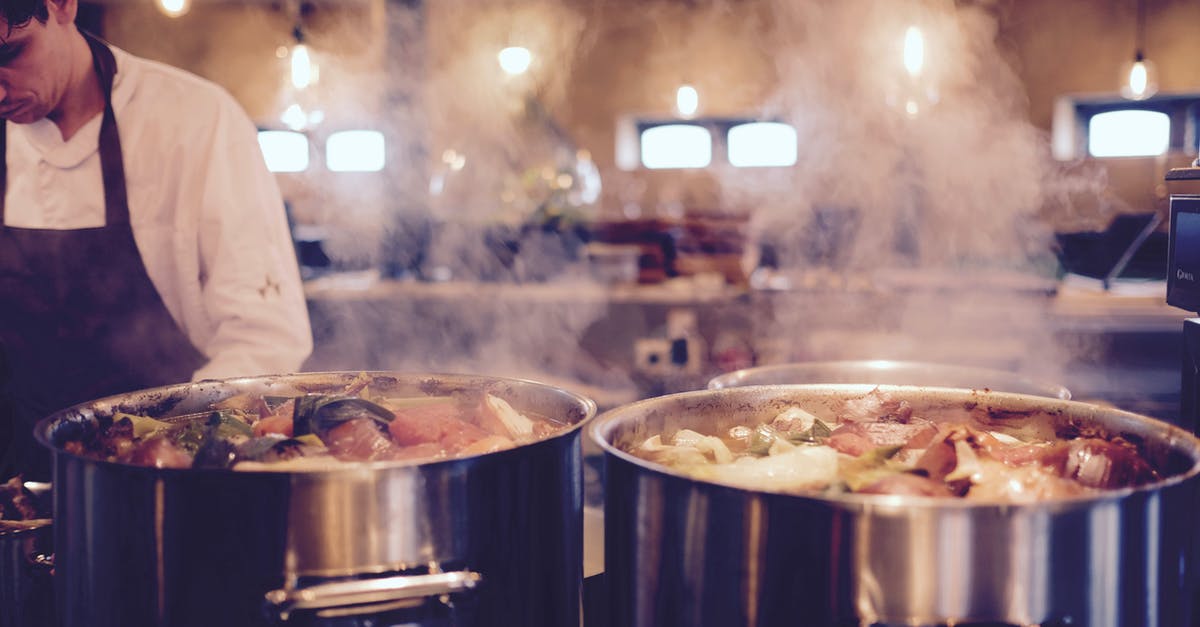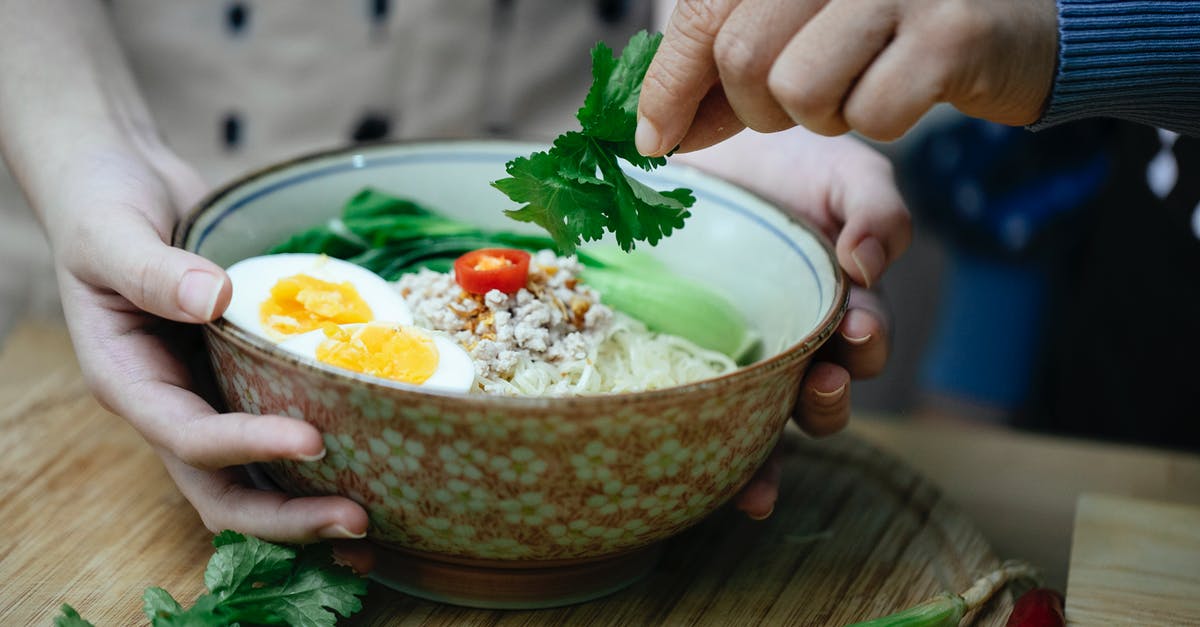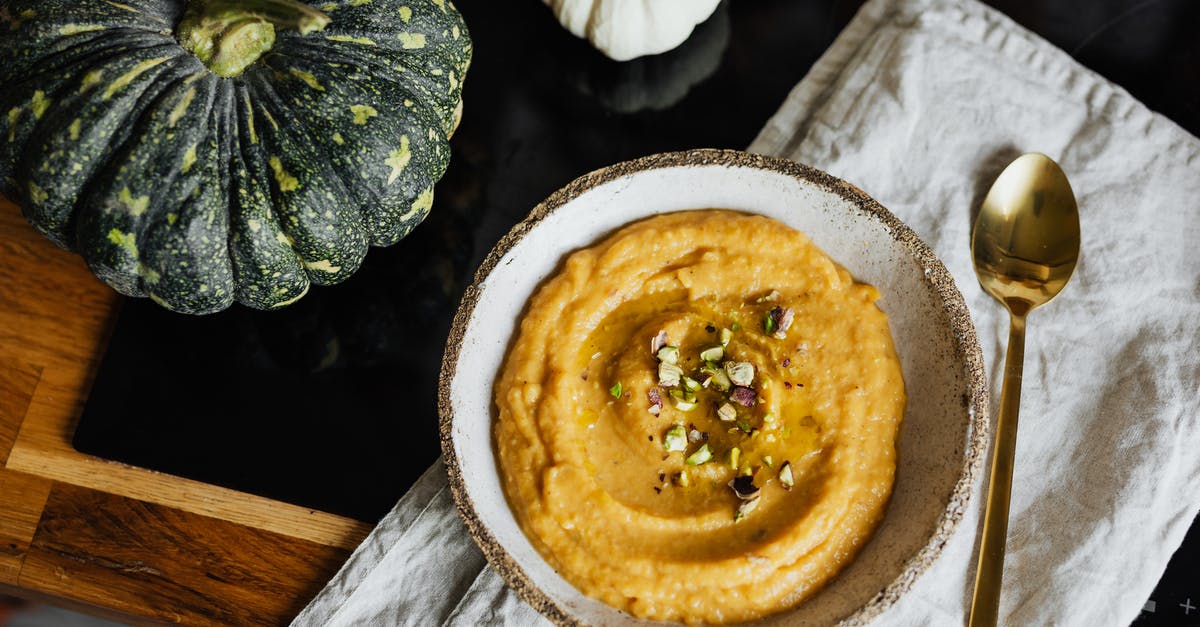pressure cooker overflowing while cooking soup

All my life I've cooked soup in a big, old (over 30 years old) pressure cooker. I'd boil all the vegetables in it, open it to blend them all together, then add cabbage and let it boil anew.
Now, in an attempt to boil the vegetables for less time and, therefore, avoid losing so many nutrients, I've started blending the raw vegetables. That way, the whole thing only needs to boil once and the flavours are much stronger. What I do is simply blend the vegetables with some water until it is a thick 'juice'. Then I add some more water, to make it less thick, add the cabbage and put it on the cooker.
Unfortunately, the blended 'juice' starts foaming (I'm not quite sure if that's the accurate word, since I'm not a native speaker, but to me it looks like a thick vegetable foam) and often spills over the little opening for releasing some of the pressure. I've tried boiling it in a normal pot, and the situation was the same: whenever the soup comes to a boil, the foam starts climbing up the pot and, if the fire isn't immediately turned down, it will overflow.
Can someone explain why this happens now when it didn't before? And how can I avoid it overflowing?
Best Answer
Simply put: it's happening because you're now blending the vegetables prior to cooking.
All vegetables are composed of plant cells, which have relatively rigid, fibrous walls composed of various starches; these trap the moisture and nutrients that the plant needs to survive, and provide structure. As you cook (applying heat) those starches will soften and become less rigid. Some of the cells will burst and allow their interiors to leach out, but on the whole the structure slowly deforms and collapses as you cook. Once softened, the structure can be easily pulverized/blended.
If you blend your vegetables prior to cooking, the starches are too tough to completely destroy; they get shredded into small fibers instead. If you then apply heat, the fibers (and various proteins contained in the plant) will still link up with one another, and are still tough enough to provide some structure while also being extremely light. As a result, they'll form bubbles that trap steam as it boils out of the solution, producing the foam that you're seeing.
You could try adding an enzyme like pectinase to break down pectin, one of the compounds responsible for the foam. This will only be partially effective because there are other starches which contribute to the foaming effect, and pectinase works on pectin only.
You could also try reducing the heat and letting your blended vegetables only come to a bare simmer; that will reduce the steam being forced out of solution, and thus reduce the number of bubbles that form. This wouldn't really be an option in the pressure cooker, which relies on higher heat to produce pressure and thus faster cooking.
But really, the easiest way to avoid this would simply be going back to your old method of boiling before blending. The foam is tricky enough to deal with that you won't gain much in terms of convenience by just boiling once. And if you want to preserve the nutrients from the raw vegetables, blending first may do more harm than good because you're exposing them to additional oxygen and heat which break them down. There's not really a lot you can do to protect those nutrients from the high heat of a pressure cooker at any rate. If you want to preserve them as much as possible, you'll want to try a juicer or some other process that doesn't involve the application of (much) heat.
Pictures about "pressure cooker overflowing while cooking soup"



Quick Answer about "pressure cooker overflowing while cooking soup"
This is caused by the excessive pressure generated by the glut of liquid. Too much pressure breaks down food. As for the risks it is also possible for the food to block the pressure valve if the pot is filled too high.Why does my pressure cooker overflow?
When the pressure cooker lid is not placed correctly on the cooking pot, it's going to release steam. This is the simple reason why many of these pressure cooking tools leak steam from their pots. Since these tools produce a lot of pressure inside the pot, the pressurized steam often looks for small openings.Why is steam coming out of my pressure cooker while cooking?
During the pressurization time, you may see steam coming from under the edges of the lid or through the black pressure valve on the top of the lid. This is perfectly normal! Factors affecting the pressurization time include how full the pot is and how cold the ingredients are.How do I stop my cooker from overflowing?
HOW TO AVOID OVER FLOWING WHILE PRESSURE COOKING \u2013 First allow the food in the cooker to boil ,then place the lid and once the pressure starts coming out ,place the whistle . WHY STORE COOKER GASKET IN FRIDGE OR FREEZER \u2013 While in use , the cooker heats up and so does the gasket.Why is my pressure cooker spitting water?
Instant Pot is Leaking SteamIt's normal to have small amounts of steam escape from the steam release handle/valve and float valve while pressure is building. Particularly if you're making a recipe with a lot of liquid, like a soup, your Instant Pot will take time to come to pressure.Quick Tip # 6 - Preventing the mess of spilling dhal from a Pressure Cooker
Sources: Stack Exchange - This article follows the attribution requirements of Stack Exchange and is licensed under CC BY-SA 3.0.
Images: Timur Saglambilek, Katerina Holmes, Karolina Grabowska, Foodie Factor
